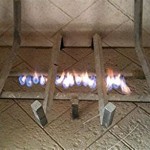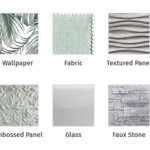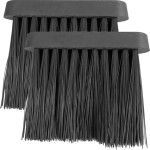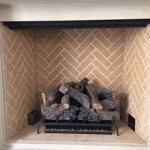Decorative Gas Fireplace Exterior Vent Cover: Functionality and Aesthetics
A gas fireplace offers the ambiance of a traditional wood-burning fireplace without the associated complexities and mess. One crucial, yet often overlooked, component of a gas fireplace system is the exterior vent cover. This seemingly simple fixture serves a vital role in the safe and efficient operation of the fireplace, while also presenting an opportunity to enhance the exterior aesthetics of the home. The decorative gas fireplace exterior vent cover represents a balance between practical necessity and visual appeal, and understanding its function, types, and selection criteria is crucial for homeowners opting for this heating solution.
This article will delve into the purpose and importance of exterior vent covers for gas fireplaces, explore the various types available, and guide the reader through key considerations when selecting a decorative vent cover that complements both the fireplace and the overall architectural style of the building.
Understanding the Function of an Exterior Vent Cover
The primary function of an exterior vent cover is to provide a protected opening for the exhaust gases produced by the gas fireplace to escape the home. This critical function ensures the safe and efficient operation of the fireplace, preventing the buildup of potentially harmful combustion byproducts within the living space. Specifically, exterior vent covers serve the following purposes:
Exhaust Ventilation: Gas fireplaces, like any combustion appliance, produce exhaust gases, including carbon dioxide and water vapor, among other trace elements. The vent cover provides an unobstructed pathway for these gases to safely dissipate into the atmosphere. Without a properly functioning vent, these gases could accumulate inside the house, posing a serious health risk.
Protection from the Elements: The vent cover acts as a barrier against external elements such as rain, snow, wind, and debris. Precipitation entering the vent can damage the fireplace components, reduce efficiency, and even cause corrosion. Debris, such as leaves and twigs, can obstruct the vent, restricting airflow and potentially leading to a dangerous buildup of exhaust gases.
Prevention of Backdrafting: Wind conditions can sometimes cause a backdraft, where air is forced back down the vent, pushing exhaust gases into the home. A well-designed vent cover incorporates features, such as specific cap designs or wind deflectors, to minimize the likelihood of backdrafting.
Animal Deterrent: Open vents can become attractive entry points for birds, rodents, and insects. Vent covers typically include a mesh or screen to prevent animals and pests from entering the vent system, protecting the fireplace and the home from potential damage and infestation.
Aesthetic Enhancement: While functionality is paramount, a decorative vent cover also contributes to the overall appearance of the exterior of the house. Available in a wide range of styles, materials, and finishes, vent covers can be selected to complement the architecture and landscaping of the property.
Types of Decorative Gas Fireplace Exterior Vent Covers
The market offers a diverse range of decorative gas fireplace exterior vent covers, each with its unique design features and suitability for different applications. Here are some common types:
Standard Louvered Vent Covers: These are the most basic and commonly used type of vent cover. They feature horizontal or vertical louvers that allow for airflow while providing some protection from the elements. Louvered vent covers are typically made of metal, such as aluminum or galvanized steel, and can be painted to match the exterior of the house. While functional, they may not be the most aesthetically pleasing option.
Decorative Grille Vent Covers: These vent covers feature intricate designs, such as geometric patterns, floral motifs, or custom artwork. They are often made of cast iron, bronze, or other durable materials. Decorative grille vent covers offer a significant aesthetic upgrade compared to standard louvered vents, adding a touch of elegance and personality to the exterior of the home. They are available in a variety of finishes, including antique bronze, brushed nickel, and powder-coated colors.
Cap-Style Vent Covers: These vent covers feature a raised cap or hood that protects the vent opening from rain and snow. Cap-style vents are often used in areas with heavy precipitation. They can be made of metal, ceramic, or even stone, and are available in a variety of styles to complement different architectural designs.
Wind-Resistant Vent Covers: Designed specifically to minimize backdrafting, wind-resistant vent covers incorporate features such as angled baffles or rotating turbines that deflect wind away from the vent opening. These vent covers are particularly useful in areas with strong winds or exposed locations. They are typically made of durable metals, such as stainless steel or aluminum, to withstand harsh weather conditions.
Flush-Mount Vent Covers: These vent covers are designed to sit flush with the exterior wall, creating a sleek and minimalist appearance. They are often used in modern or contemporary homes. Flush-mount vent covers can be made of metal, glass, or composite materials, and may feature concealed fasteners for a seamless look.
Custom-Designed Vent Covers: For homeowners seeking a truly unique look, custom-designed vent covers offer the ultimate in personalization. These vent covers can be created to match specific architectural details, incorporate custom artwork, or even feature the homeowner's initials or family crest. Custom-designed vent covers are typically crafted by skilled artisans and can be made of a variety of materials, including metal, wood, stone, and glass.
Key Considerations When Selecting a Decorative Vent Cover
Choosing the right decorative gas fireplace exterior vent cover involves careful consideration of several factors, including:
Material: The material of the vent cover should be durable, weather-resistant, and aesthetically pleasing. Common materials include aluminum, galvanized steel, cast iron, bronze, copper, and stainless steel. Aluminum is lightweight and resistant to corrosion, making it a good choice for many applications. Galvanized steel is strong and durable but can rust if the protective coating is damaged. Cast iron is heavy and durable but can also rust. Bronze and copper are naturally corrosion-resistant and develop a beautiful patina over time. Stainless steel is highly durable and resistant to corrosion, making it an excellent choice for harsh environments.
Size and Shape: The size and shape of the vent cover should be appropriate for the size of the vent opening and the overall design of the fireplace and the home. Ensure that the vent cover provides adequate ventilation while also blending seamlessly with the surrounding architecture. Measure the existing vent opening accurately before selecting a replacement vent cover.
Style and Finish: The style and finish of the vent cover should complement the architectural style of the home. Consider the color, texture, and overall design of the vent cover in relation to the siding, trim, and other exterior features of the house. Choose a finish that is durable and resistant to fading or chipping.
Functionality: Ensure that the vent cover provides adequate protection from the elements, prevents backdrafting, and deters animals from entering the vent system. Look for vent covers with features such as wind deflectors, screens, and tight-fitting seals.
Local Codes and Regulations: Check local building codes and regulations to ensure that the vent cover meets all applicable requirements. Some jurisdictions may have specific requirements for vent cover materials, size, or design.
Ease of Installation and Maintenance: Consider the ease of installation and maintenance when selecting a vent cover. Choose a vent cover that is easy to install and clean. Regular maintenance, such as removing debris and checking for corrosion, will help to ensure that the vent cover continues to function properly and look its best.
Cost: The cost of decorative gas fireplace exterior vent covers can range from a few dollars for a basic louvered vent to several hundred dollars for a custom-designed vent. Set a budget before shopping for a vent cover and compare prices from different retailers. Consider the long-term value of the vent cover, including its durability, aesthetic appeal, and ability to protect the fireplace and the home.
Ultimately, the selection of a decorative gas fireplace exterior vent cover involves a careful balancing act between functionality, aesthetics, and budget. By understanding the purpose of the vent cover, exploring the available types, and considering the key factors outlined above, homeowners can choose a vent cover that not only ensures the safe and efficient operation of their gas fireplace but also enhances the overall beauty and value of their home.

Termination Cap Cover For Direct Vent Fireplace Draft Stopper

Termination Cap Cover For Direct Vent Fireplace Draft Stopper

Gas Fireplace Exterior Vent Can I Paint The Protective Cage

Majestic Drc Radius Decorative Cover For Trapezoid And Horizontal Termination Caps

How To Hide Unsightly Outdoor Vents With Repurposed Doors Interior Frugalista

Termination Cap Cover For Direct Vent Fireplace Draft Stopper
Gas Fireplace Venting Explained Heat Glo

Majestic Drc Radius Decorative Cover For Slp Dvp Trap Us Fireplace

How To Hide Unsightly Outdoor Vents With Repurposed Doors Interior Frugalista

Empire 36 Inch Tahoe Premium Direct Vent Fireplace Millivolt
Related Posts








